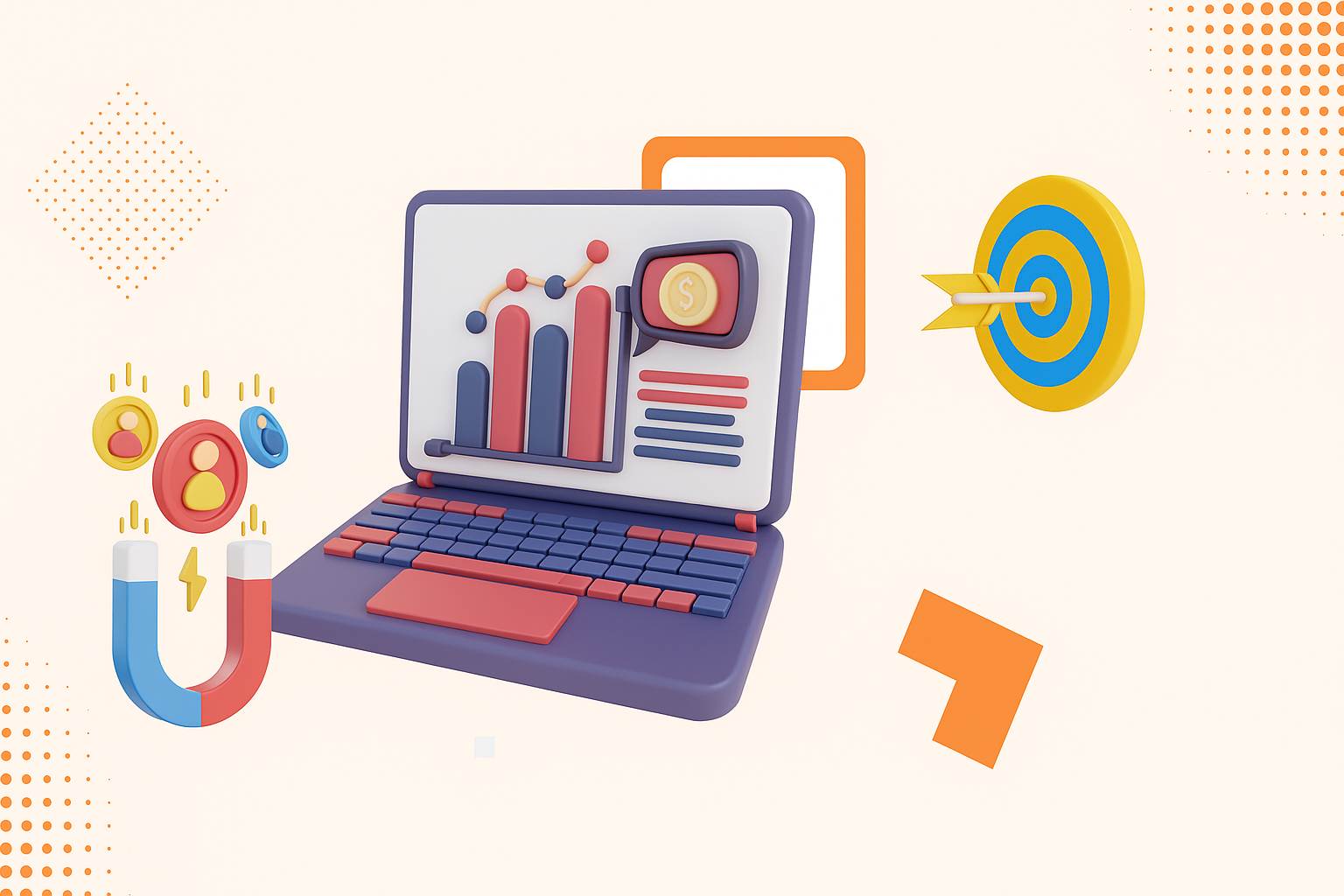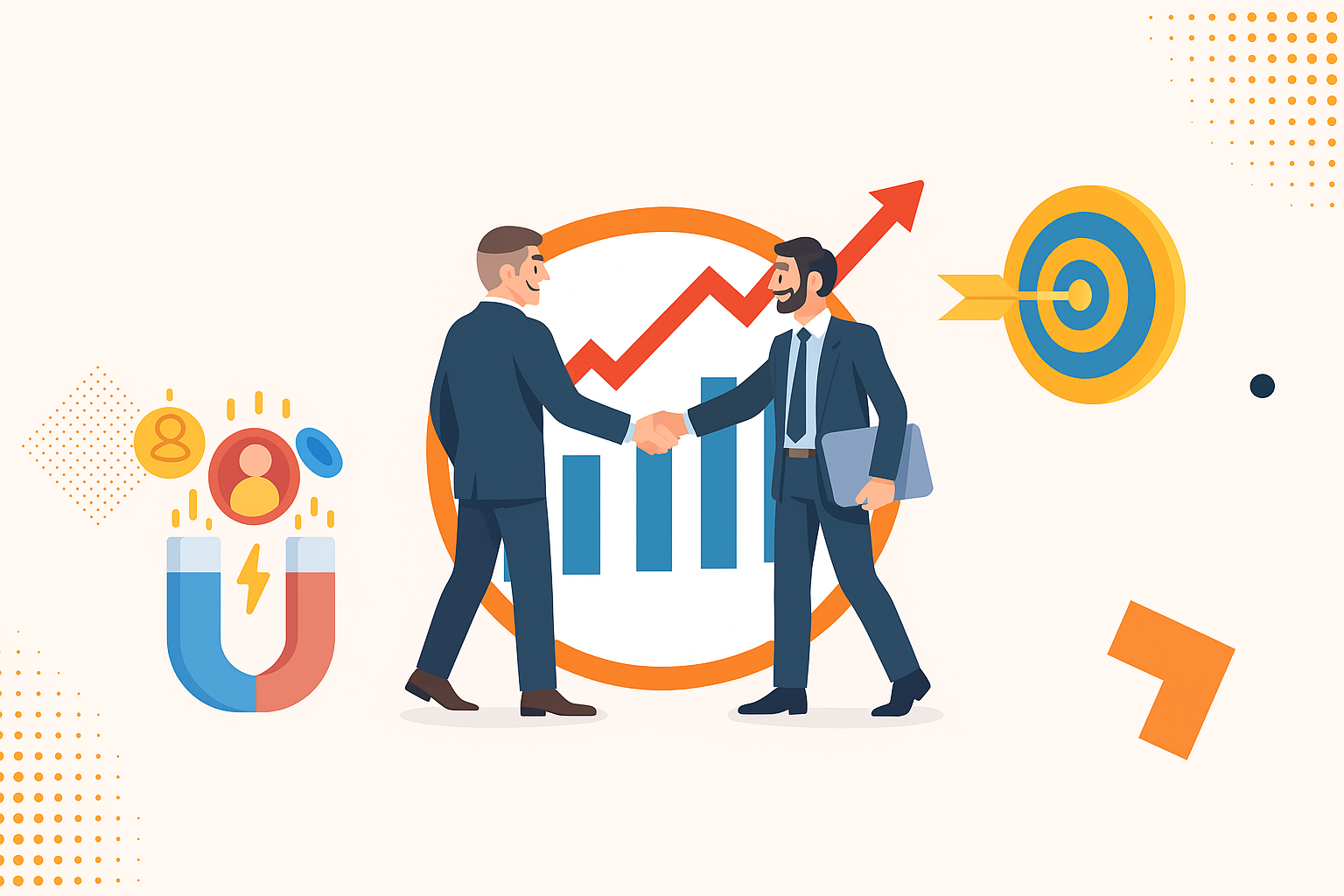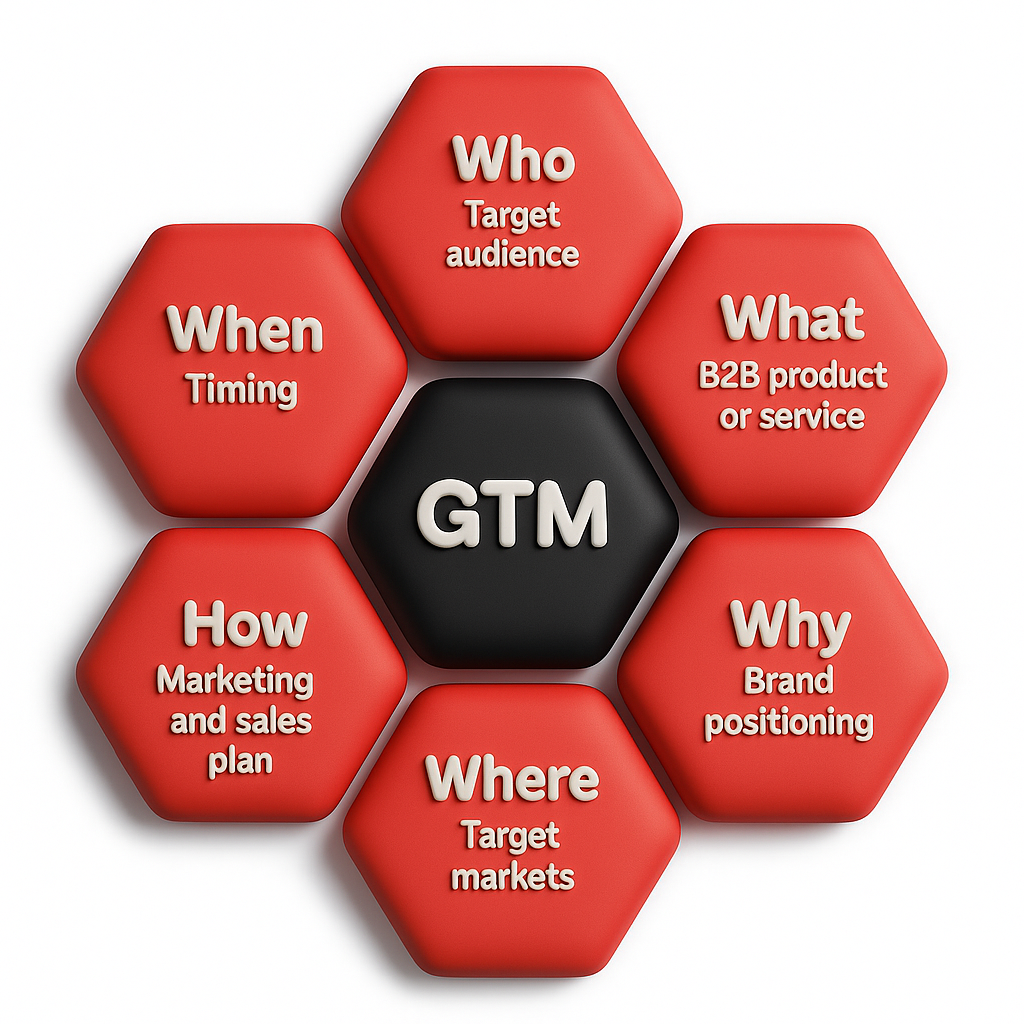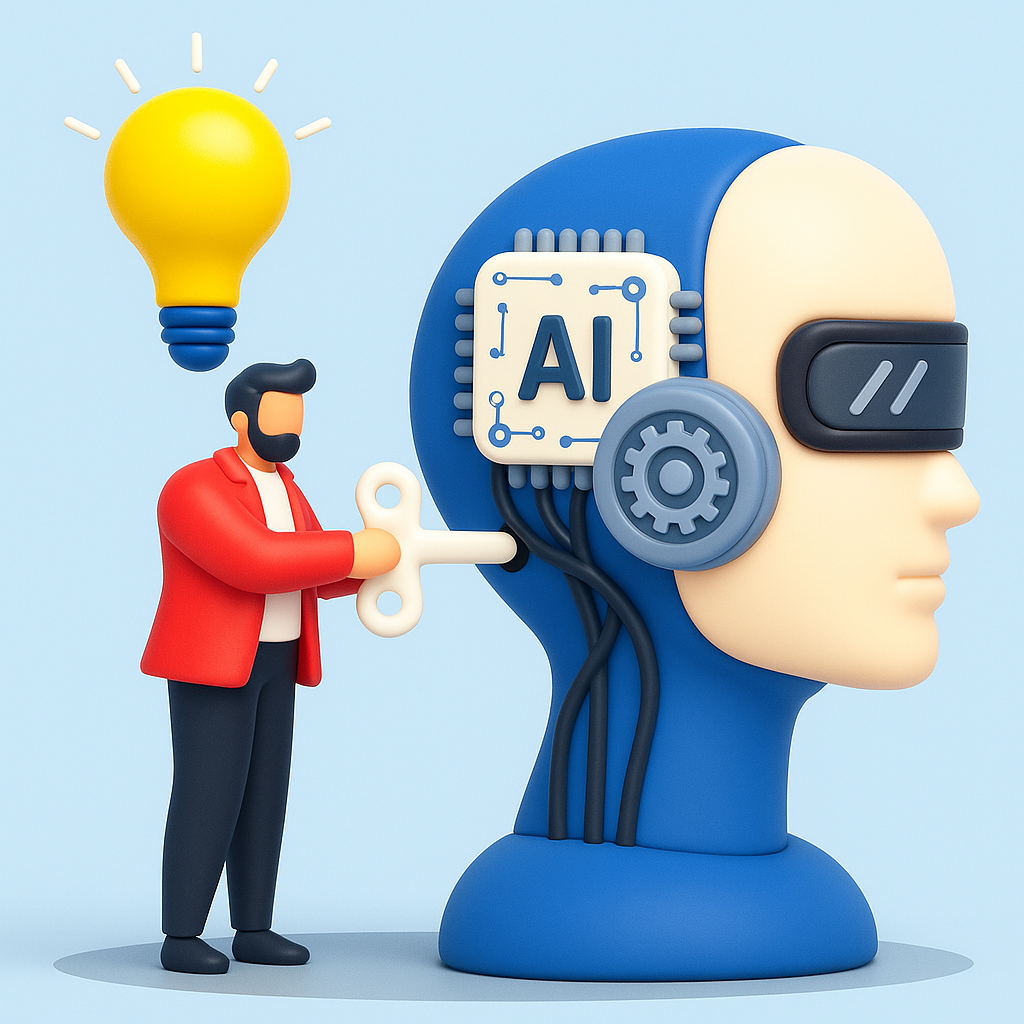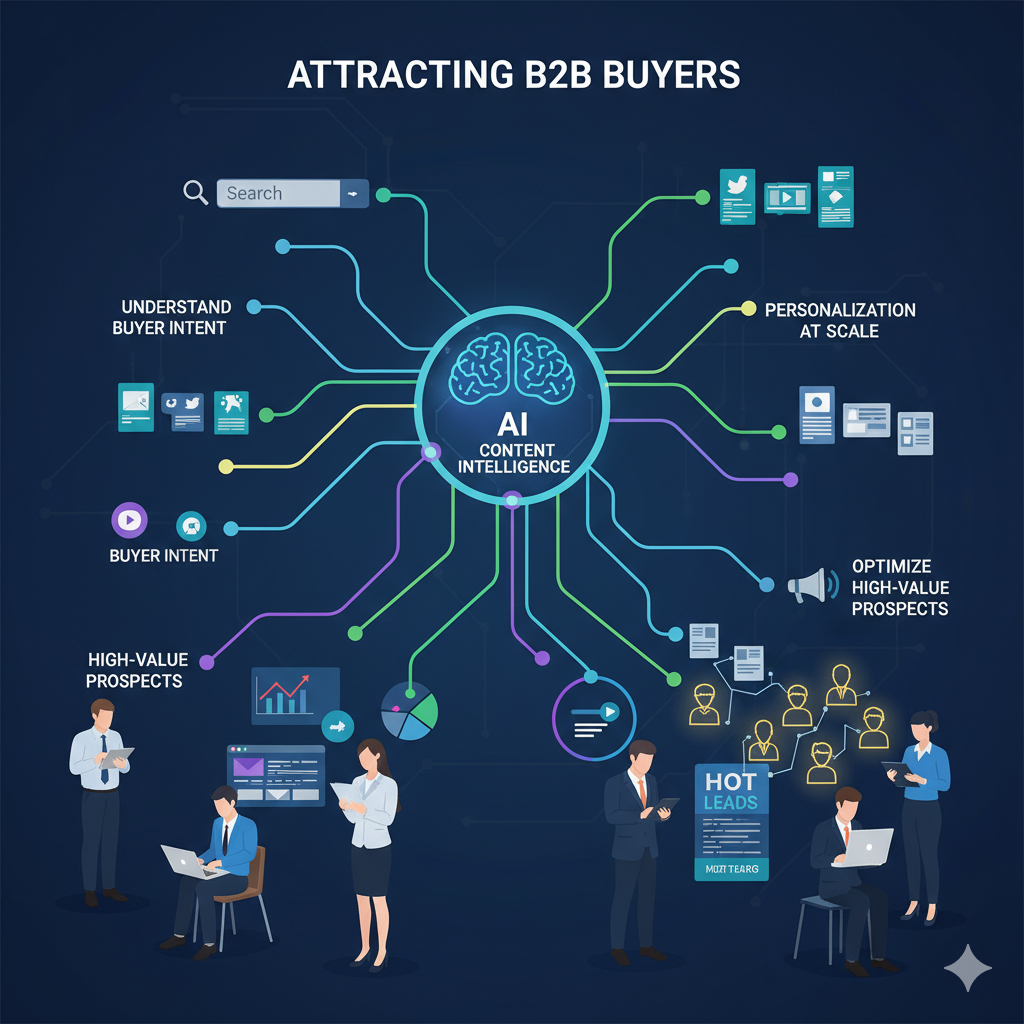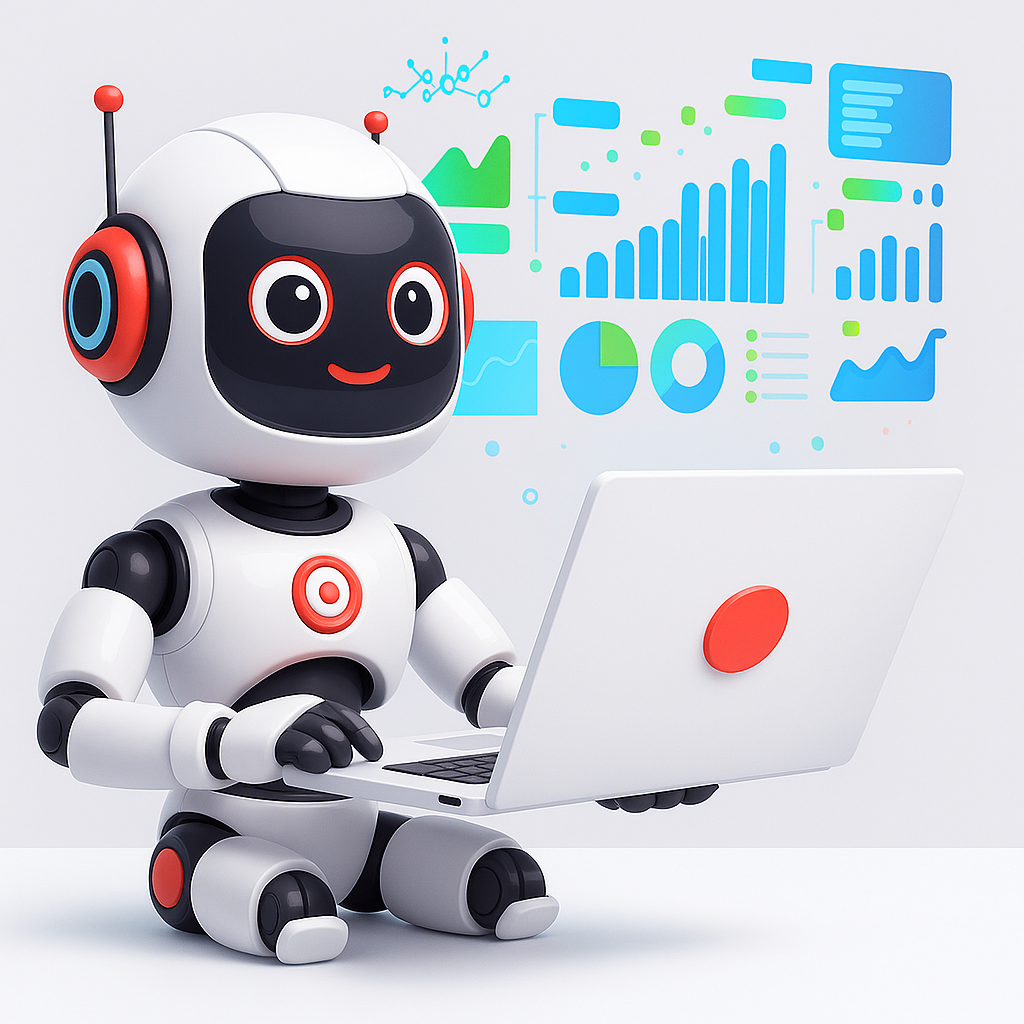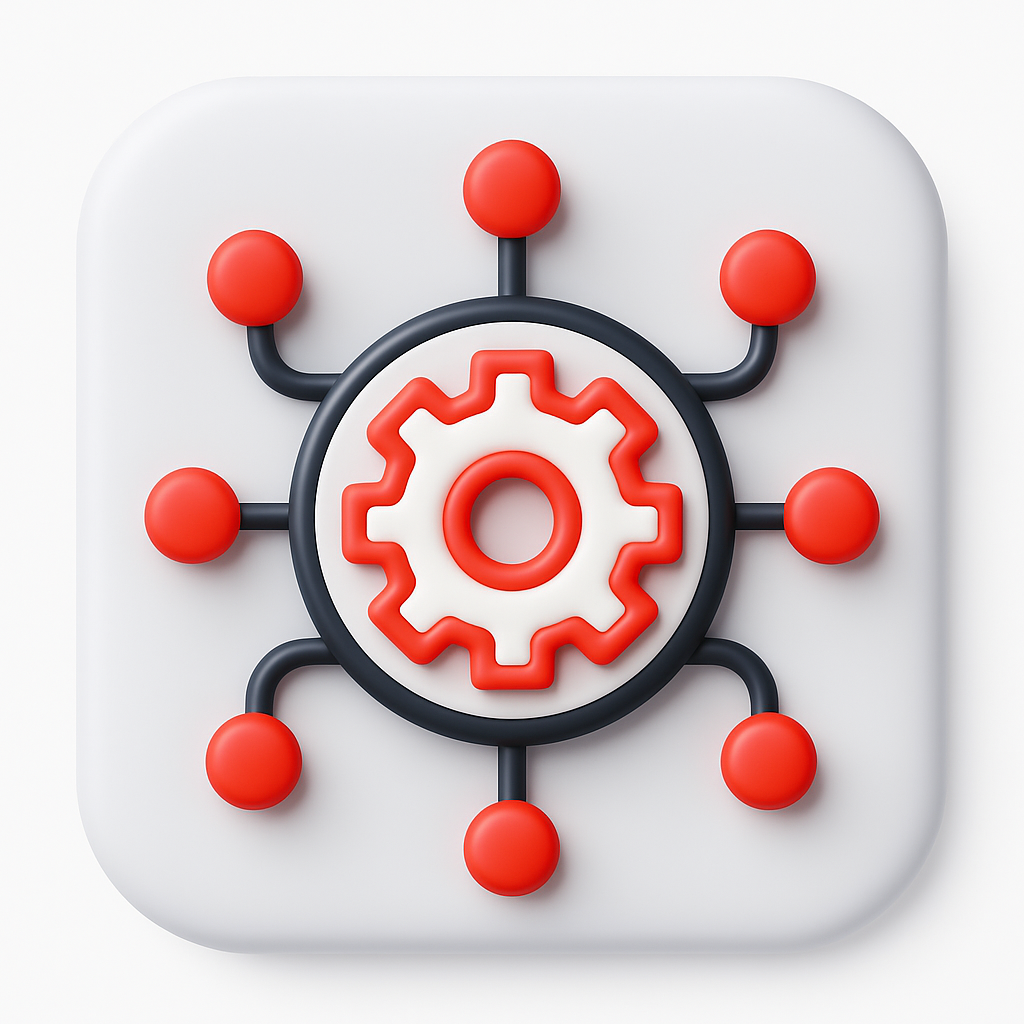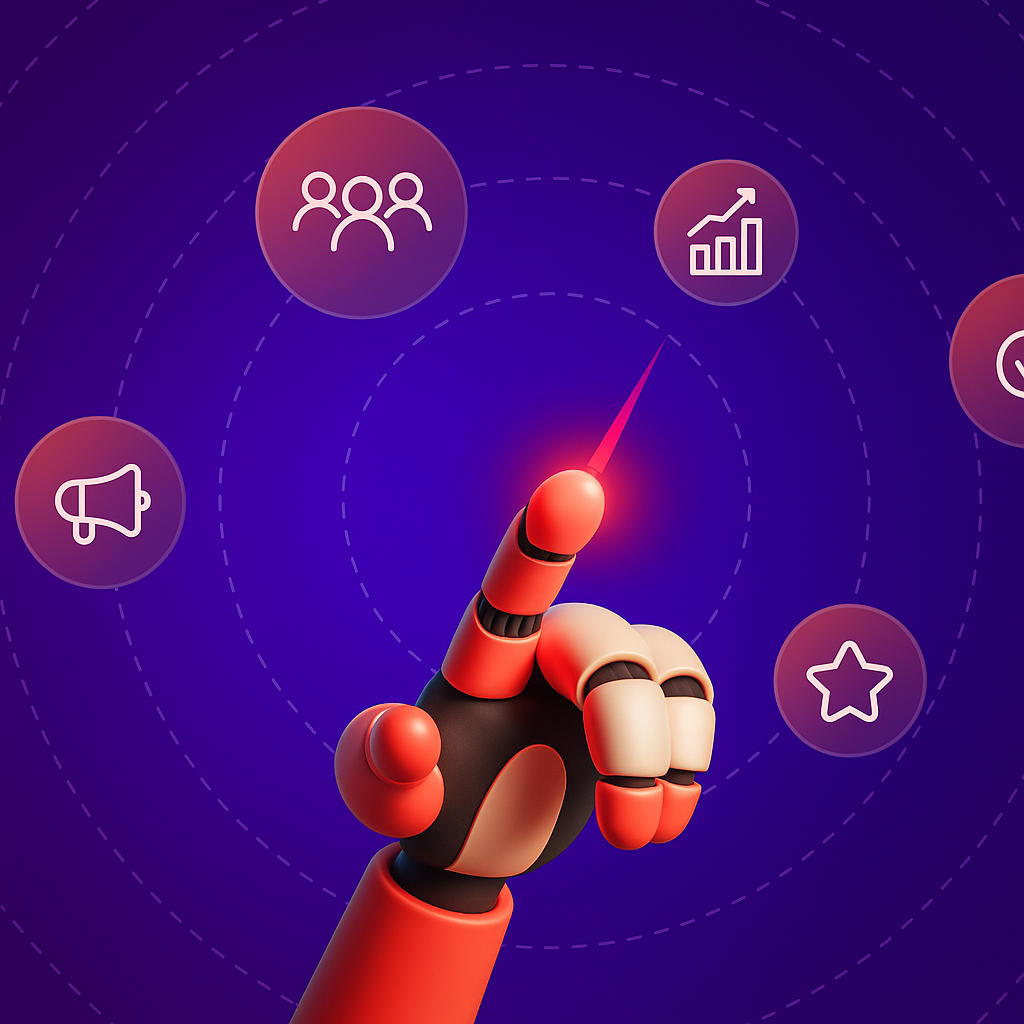Lead Generation vs Growth Marketing: What’s the Difference and Why It Matters in 2029
In 2025, B2B marketers face a critical question: is your strategy designed to generate leads—or to drive growth? While these terms are often used interchangeably, they represent two very different approaches. Understanding this difference can determine whether your business merely fills a pipeline or builds a sustainable, scalable revenue engine.
1️⃣ Lead Generation: The Art of Filling the Funnel
Traditional lead generation focuses on one thing — capturing contacts. The goal is simple: attract prospects, get them to fill out a form, and hand those leads off to sales.
It’s transactional and measurable — MQLs, email sign-ups, downloads — but it often ends there. While this model delivers short-term wins, it doesn’t always create long-term relationships or customer loyalty.
In 2025, the problem is noise. Buyers are flooded with lead magnets, outreach emails, and generic offers. Capturing attention is no longer enough; keeping it is what drives true ROI.
Lead gen still matters, but it must evolve. Smart marketers now use AI and intent data to identify high-fit leads before outreach, ensuring quality over quantity.
2️⃣ Growth Marketing: The Engine of Sustainable Revenue
Growth marketing goes far beyond lead capture — it’s about optimizing the entire customer journey. It blends data science, automation, and experimentation to drive continuous growth across acquisition, engagement, retention, and expansion.
Think of it as a full-funnel strategy fueled by constant learning. Growth marketers test messages, channels, and content in real time to find what truly converts and scales.
In 2025, AI-driven analytics and predictive models have made growth marketing even more powerful. Tools can now forecast conversion probabilities, personalize experiences dynamically, and recommend next-best actions for each account.
Key difference:
• Lead Gen = Fill the pipeline.
• Growth Marketing = Accelerate the pipeline and maximize lifetime value.
3️⃣ Why It Matters in 2025
Today’s B2B buyers are more empowered, independent, and skeptical than ever. They expect relevance, speed, and value—not just another follow-up email.
Companies that cling to lead gen alone risk stagnation. Those embracing growth marketing leverage AI, automation, and intent insights to move from transactional tactics to scalable, data-driven ecosystems.
Instead of chasing leads, they build communities. Instead of counting conversions, they measure revenue influence and retention.
4️⃣ The Winning Formula: Marry Lead Gen with Growth Thinking
You don’t have to abandon lead gen — you just have to elevate it.
Integrate AI-powered targeting, predictive nurturing, and personalized ABM experiences. Treat every touchpoint as part of a continuous feedback loop that feeds future growth.
In 2025, success belongs to teams that think beyond leads and build growth systems that adapt, learn, and scale automatically.
Read More: https://intentamplify.com/b2b-marketing/lead-generation-vs-growth-marketing-definition-goals-tactics-and-trends/
In 2025, B2B marketers face a critical question: is your strategy designed to generate leads—or to drive growth? While these terms are often used interchangeably, they represent two very different approaches. Understanding this difference can determine whether your business merely fills a pipeline or builds a sustainable, scalable revenue engine.
1️⃣ Lead Generation: The Art of Filling the Funnel
Traditional lead generation focuses on one thing — capturing contacts. The goal is simple: attract prospects, get them to fill out a form, and hand those leads off to sales.
It’s transactional and measurable — MQLs, email sign-ups, downloads — but it often ends there. While this model delivers short-term wins, it doesn’t always create long-term relationships or customer loyalty.
In 2025, the problem is noise. Buyers are flooded with lead magnets, outreach emails, and generic offers. Capturing attention is no longer enough; keeping it is what drives true ROI.
Lead gen still matters, but it must evolve. Smart marketers now use AI and intent data to identify high-fit leads before outreach, ensuring quality over quantity.
2️⃣ Growth Marketing: The Engine of Sustainable Revenue
Growth marketing goes far beyond lead capture — it’s about optimizing the entire customer journey. It blends data science, automation, and experimentation to drive continuous growth across acquisition, engagement, retention, and expansion.
Think of it as a full-funnel strategy fueled by constant learning. Growth marketers test messages, channels, and content in real time to find what truly converts and scales.
In 2025, AI-driven analytics and predictive models have made growth marketing even more powerful. Tools can now forecast conversion probabilities, personalize experiences dynamically, and recommend next-best actions for each account.
Key difference:
• Lead Gen = Fill the pipeline.
• Growth Marketing = Accelerate the pipeline and maximize lifetime value.
3️⃣ Why It Matters in 2025
Today’s B2B buyers are more empowered, independent, and skeptical than ever. They expect relevance, speed, and value—not just another follow-up email.
Companies that cling to lead gen alone risk stagnation. Those embracing growth marketing leverage AI, automation, and intent insights to move from transactional tactics to scalable, data-driven ecosystems.
Instead of chasing leads, they build communities. Instead of counting conversions, they measure revenue influence and retention.
4️⃣ The Winning Formula: Marry Lead Gen with Growth Thinking
You don’t have to abandon lead gen — you just have to elevate it.
Integrate AI-powered targeting, predictive nurturing, and personalized ABM experiences. Treat every touchpoint as part of a continuous feedback loop that feeds future growth.
In 2025, success belongs to teams that think beyond leads and build growth systems that adapt, learn, and scale automatically.
Read More: https://intentamplify.com/b2b-marketing/lead-generation-vs-growth-marketing-definition-goals-tactics-and-trends/
Lead Generation vs Growth Marketing: What’s the Difference and Why It Matters in 2029
In 2025, B2B marketers face a critical question: is your strategy designed to generate leads—or to drive growth? While these terms are often used interchangeably, they represent two very different approaches. Understanding this difference can determine whether your business merely fills a pipeline or builds a sustainable, scalable revenue engine.
1️⃣ Lead Generation: The Art of Filling the Funnel
Traditional lead generation focuses on one thing — capturing contacts. The goal is simple: attract prospects, get them to fill out a form, and hand those leads off to sales.
It’s transactional and measurable — MQLs, email sign-ups, downloads — but it often ends there. While this model delivers short-term wins, it doesn’t always create long-term relationships or customer loyalty.
In 2025, the problem is noise. Buyers are flooded with lead magnets, outreach emails, and generic offers. Capturing attention is no longer enough; keeping it is what drives true ROI.
Lead gen still matters, but it must evolve. Smart marketers now use AI and intent data to identify high-fit leads before outreach, ensuring quality over quantity.
2️⃣ Growth Marketing: The Engine of Sustainable Revenue
Growth marketing goes far beyond lead capture — it’s about optimizing the entire customer journey. It blends data science, automation, and experimentation to drive continuous growth across acquisition, engagement, retention, and expansion.
Think of it as a full-funnel strategy fueled by constant learning. Growth marketers test messages, channels, and content in real time to find what truly converts and scales.
In 2025, AI-driven analytics and predictive models have made growth marketing even more powerful. Tools can now forecast conversion probabilities, personalize experiences dynamically, and recommend next-best actions for each account.
Key difference:
• Lead Gen = Fill the pipeline.
• Growth Marketing = Accelerate the pipeline and maximize lifetime value.
3️⃣ Why It Matters in 2025
Today’s B2B buyers are more empowered, independent, and skeptical than ever. They expect relevance, speed, and value—not just another follow-up email.
Companies that cling to lead gen alone risk stagnation. Those embracing growth marketing leverage AI, automation, and intent insights to move from transactional tactics to scalable, data-driven ecosystems.
Instead of chasing leads, they build communities. Instead of counting conversions, they measure revenue influence and retention.
4️⃣ The Winning Formula: Marry Lead Gen with Growth Thinking
You don’t have to abandon lead gen — you just have to elevate it.
Integrate AI-powered targeting, predictive nurturing, and personalized ABM experiences. Treat every touchpoint as part of a continuous feedback loop that feeds future growth.
In 2025, success belongs to teams that think beyond leads and build growth systems that adapt, learn, and scale automatically.
Read More: https://intentamplify.com/b2b-marketing/lead-generation-vs-growth-marketing-definition-goals-tactics-and-trends/
0 Комментарии
0 Поделились

